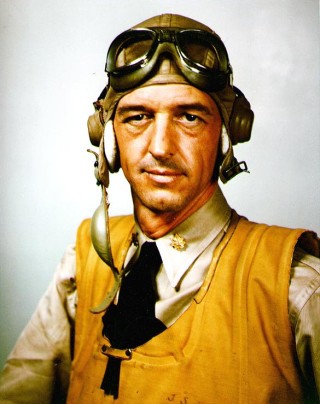
The following is from the June, 2007 issue of Naval History Magazine:
Six Grumman F4FA Wildcat fighters of Fighting Squadron (VF)-3 were the sole protection for the USS Yorktown’ s 12 torpedo planes and 17 dive bombers that attacked the Japanese First Carrier Striking Force early on 4 June 1942. Launching nearly two hours after their compatriots on board the USS Enterprise and USS Hornet , the F4Fs were led by then-Lieutenant Commander Jimmie Thach and were the only fighters to engage the Japanese over their ships that morning. The following account is adapted from Thach’s U.S. Naval Institute oral history.
Before leaving Pearl Harbor, I was given very brief indications that we expected an attack, and there was obviously a big battle coming up in the middle of the Pacific. That’s about all I was told before I landed aboard the Yorktown (CV-5) on May 30. That night, the air group met in the wardroom where Commander Murr Arnold, the air officer, gave us a complete briefing on everything they knew about the opposing Japanese forces and their probable intentions. So we had a day or so to think before we arrived in position. After this briefing, it was obvious a very serious and crucial engagement was coming up. If we could win this one, we might be able to stop the Japanese advance.
For even more, see: The Battle of Midway: The Naval Institute Guide to the U.S. Navy’s Greatest Victory




